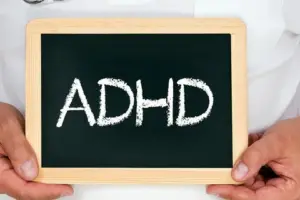Attention-Deficit/Hyperactivity Disorder (ADHD) is a neurodevelopmental disorder that affects both children and adults. Characterized by a persistent pattern of inattention, hyperactivity, and impulsivity, ADHD can significantly impact daily functioning and quality of life. Understanding the common ADHD symptoms and learning effective strategies to address them is crucial for managing the condition successfully.
Understanding ADHD symptoms
There are two main types of ADHD symptoms: inattentive symptoms and hyperactive-impulsive symptoms. Individuals with ADHD may exhibit symptoms from either category or a combination of both.
Inattentive Symptoms
- Due to a lack of attention to detail, individuals with ADHD often make careless mistakes in schoolwork, work tasks, or other activities. They might overlook important instructions or miss small errors.
- Difficulty Sustaining Attention: Staying focused on tasks or activities, especially those that are repetitive or boring, can be challenging. This symptom can impact performance in academic, professional, and daily life situations.
- Poor Listening Skills: Even when directly spoken to, individuals with ADHD may appear not to listen. They may seem to be daydreaming or distracted by other thoughts or stimuli.
- Inability to Follow Through: Starting tasks is one thing, but completing them is another challenge. Individuals with ADHD often struggle to finish projects, assignments, or chores.
- Disorganization: Managing time, keeping track of belongings, and organizing tasks can be particularly difficult. This symptom often results in missed deadlines, lost items, and a generally chaotic lifestyle.
- Avoidance of Tasks Requiring Sustained Mental Effort: People frequently avoid or perform tasks that require prolonged concentration and mental effort inadequately, such as reading or completing lengthy forms.
Hyperactive-Impulsive Symptoms
- Fidgeting and Restlessness: Individuals with ADHD may be unable to sit still. When expected to sit quietly, they may fidget with their hands or feet, squirm in their seats, or constantly move around.
- Excessive Talking: Speaking excessively and finding it difficult to stay quiet in situations that require silence are common symptoms. This can be disruptive in classroom or work settings.
- Interrupting or Intruding: People with ADHD may frequently interrupt conversations or intrude on others’ activities. They may respond to questions prematurely or find it difficult to wait their turn during conversations and activities.
- Impulsivity: Acting without thinking about the consequences is a hallmark of ADHD. This can manifest as risky behaviors, impatience, and difficulty waiting in line or waiting for their turn.
- Inability to Play Quietly: Children with ADHD frequently find it difficult to engage in quiet activities. They may prefer loud, active play and struggle with more subdued, solitary activities.
Addressing ADHD symptoms
While ADHD can present significant challenges, various strategies can help manage and mitigate its symptoms. These approaches can include behavioral interventions, lifestyle adjustments, and, in some cases, medication.
Behavioral Interventions
- Cognitive Behavioral Therapy (CBT): CBT helps individuals with ADHD develop skills to manage their symptoms. It focuses on changing negative thought patterns and behaviors, improving organizational skills, and enhancing time management.
- Behavioral Parent Training (BPT): For children with ADHD, BPT teaches parents strategies to manage their child’s behavior effectively. This includes techniques for positive reinforcement, setting clear expectations, and implementing consistent consequences for misbehavior.
- Classroom Management Techniques: Teachers can use specific strategies to help students with ADHD. These might include seating arrangements that minimize distractions, breaking tasks into smaller, manageable parts, and providing regular breaks.
Lifestyle Adjustments
- Structured Routines: Establishing a consistent daily routine can help individuals with ADHD manage their time and tasks more effectively. This includes setting specific times for waking up, eating, working, and sleeping.
- Organization Tools: Using planners, calendars, and organizational apps can assist with keeping track of assignments, appointments, and deadlines. Visual aids like charts and checklists can also be helpful.
- Healthy Diet and Exercise: Regular physical activity can help reduce hyperactivity and improve concentration. A balanced diet, rich in nutrients, supports overall brain health and can positively impact ADHD symptoms.
- Sleep hygiene: ensuring adequate and quality sleep is crucial. Establishing a calming bedtime routine, limiting screen time before bed, and creating a restful sleep environment can improve sleep patterns.
Medication
For some individuals, medication may be necessary to manage ADHD symptoms effectively. Commonly prescribed stimulant medications like methylphenidate and amphetamines significantly reduce symptoms of inattention, hyperactivity, and impulsivity. Non-stimulant medications, like atomoxetine, are also an option for those who do not respond well to stimulants.
Mindfulness and relaxation techniques
- Mindfulness Meditation: Practicing mindfulness can help individuals with ADHD increase their focus and reduce stress. Techniques like deep breathing, guided imagery, and progressive muscle relaxation can be beneficial.
- Yoga and Tai Chi: These practices combine physical movement with mental focus and can help improve attention, reduce hyperactivity, and enhance emotional regulation.
Conclusion
ADHD symptoms can be challenging, but with the right strategies and support, individuals can manage their symptoms effectively. Understanding the common symptoms of ADHD and implementing behavioral interventions, lifestyle changes, and medication, when necessary, can significantly improve the quality of life for those affected by this condition. Early intervention and a tailored approach to each individual’s needs are key to successfully managing ADHD.
